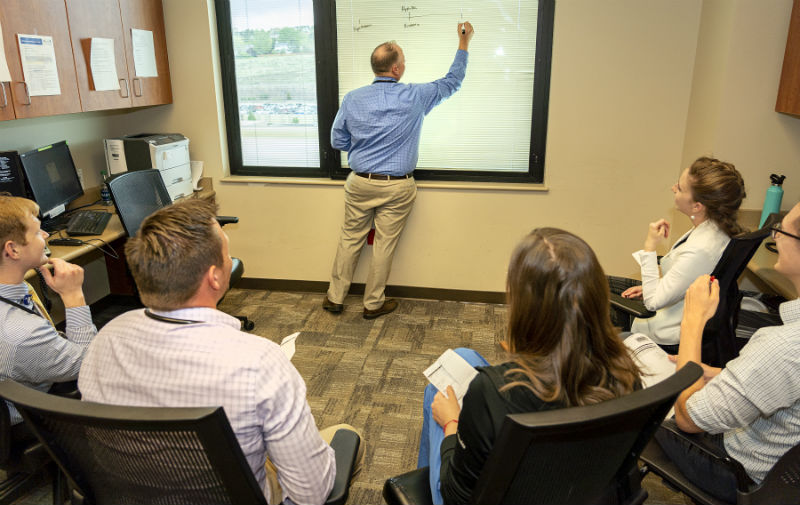Hospital Medicine

Our Hospital Medicine training combines both inpatient and outpatient experiences. Interns complete five blocks of hospital medicine, with each block consisting of two weeks of inpatient care followed by two weeks of outpatient care. In the second year, residents complete two blocks of night float, one block of hospital medicine, and one block in the ICU. Third-year residents finish with three blocks of hospital medicine.
The inpatient service consists of three residents and an attending physician, typically covering 12–20 patients, including 1–2 critically ill patients. Common diagnoses include community-acquired and hospital-associated pneumonia, CHF and COPD exacerbations, chest pain, sepsis, pancreatitis, diabetic ketoacidosis, pulmonary embolism, and stroke.
Our attending physicians are 90% Family Medicine-trained and 10% Internal Medicine-trained. The hospitalist service collaborates closely with the residency service, ensuring a balanced patient census that fosters a rich learning environment. Residents maintain continuity of care by continuing 3–6 half-day outpatient clinics during their outpatient weeks.
ICU
Residents assist with pulmonary, surgery, cardiology, and neurology consults, learning ventilator management and critical care skills. They participate in cardiology consults, EKG interpretation, and review of cardiac diagnostic tests. Neurologic workups and exams are emphasized. We are supported by a strong medical community.
Night Float
The night float rotation, consisting of two 4-week blocks, is a valuable learning experience. The night float resident oversees the entire hospital service and handles admissions, developing autonomy under faculty supervision.

